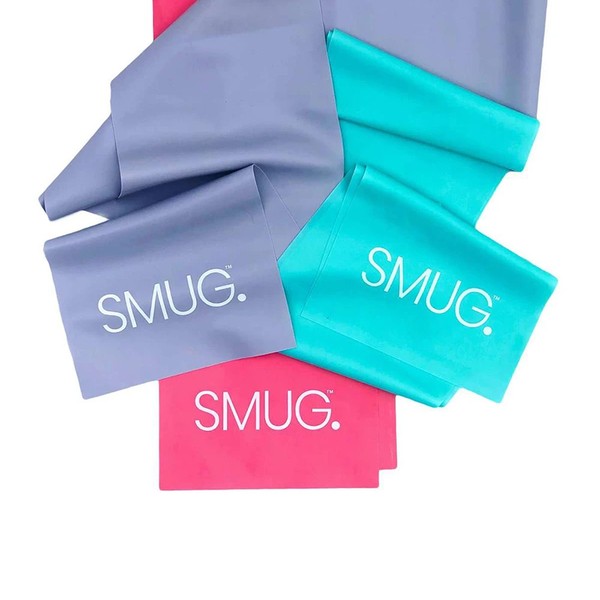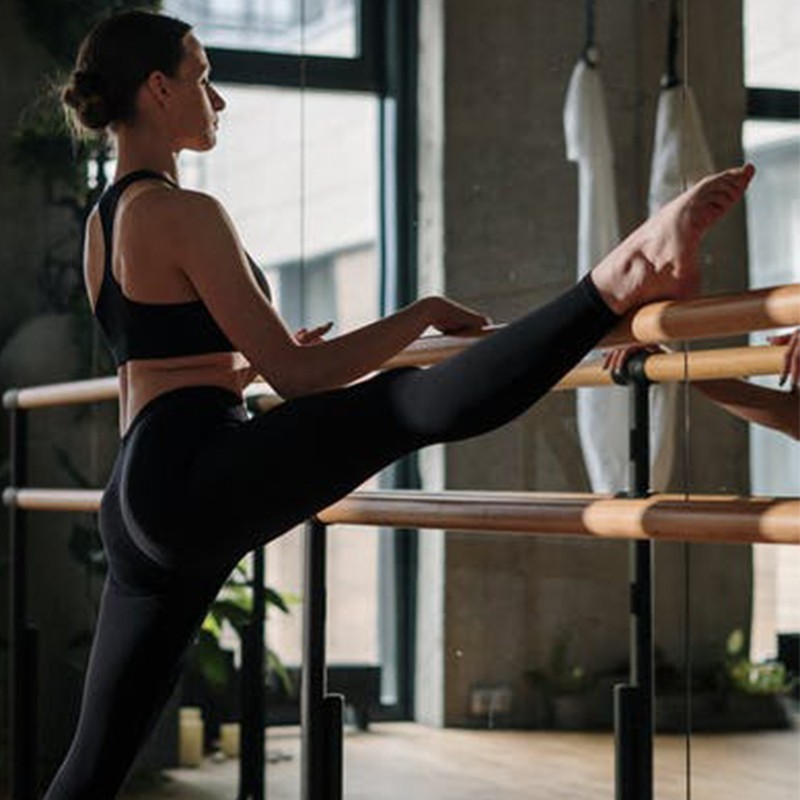
How To Get Started With Barre
All The Boxes Are Ticked
“The benefits of barre are endless. First, barre strengthens and tightens the hips, glutes, thighs, core, shoulders and triceps, and improves flexibility and posture. By using multiple repetitions to exhaust targeted muscle groups, it will strengthen and sculpt muscles without increasing bulk. It will also increase your cardiovascular endurance and metabolism, which will make your body burn calories more efficiently. Barre is also an incredibly effective way to transform the so-called problem areas – commit to doing three to four classes a week for four weeks and you’ll see leaner thighs, chiselled arms, a sculpted back, flatter abs, and a perkier bottom.” – Maria Eleftheriou, head of barre at Psycle
It Counts As Strength Training
“Barre may not seem like the most obvious form of resistance training, but that’s the beauty of it – you’re building strength in a fun, low-impact way. Unlike a HIIT class, barre focuses on functional strength training, and you’ll use lighter weights too, ideally no more than 1.5kg. It’s important to use lighter hand weights as barre is a high repetition concept. You could end up doing choreography with your arms and not letting them drop for five minutes, so even 1kg can end up feeling heavy. By training the muscles in this way, you’ll lengthen the muscle and build endurance, instead of bulk, resulting in chiselled, more defined limbs.” – Kiri Louise, founder of The Classical Edit
You’ll Learn To Embrace The Shake
“In barre, you hold positions for a lot longer than other workouts, which is a huge test of endurance, meaning your muscles can start to shake as muscle fibres fatigue. This isn’t a sign of weakness by any stretch, but it can be a strange sensation to get used to. Try to stick with the shake and work through it – by damaging muscle tissue, the body regenerates, meaning it’s the secret to becoming stronger.” – Kiri
It’s Different To Pilates
“There’s a common misconception barre is similar to Pilates when in fact they are very different. Barre uses lots of repetition at a fairly fast pace to exhaust muscle groups, while Pilates focuses more on minimal repetitions. Pilates tends to follow a specific order and structure, whereas barre has more room for creativity with unique choreography – no two classes are ever the same. The equipment used varies, too. In Pilates, you’ll likely use a variety of apparatuses and props, whereas barre prioritises bodyweight exercises and free weights.” – Maria
Classes Can Vary
“Barre formats vary depending on the studio, some are more fitness-focused while others are more akin to traditional ballet. At DEFINE, a session starts with a warm-up incorporating light hand weights and movements such as leg lifts, bicep curls and push-ups; within ten minutes your body should be warm. We then head to the barre (if you are at home, a chair is the perfect substitute), where we work through a series of moves to tone your legs and bum. It’s then down to the mat to blast the abs with some core work before finishing with a cardio blast and some stretches.” – Ashley Verma, founder of Define London
The Movements Are Small
“The most common mistake people make when starting barre is making the movements too big. As it’s a fun, energised atmosphere, it can be tempting to throw yourself into the moves and bounce around in your reps, but it’s the moves that look insignificant that burn the most, so keep things small and controlled. For example, just lifting and lowering your leg one inch may feel small, but when repeated over time can work wonders to build muscle.” – Kiri
It’s Important To Listen To Your Body
“Don’t feel you have to take the more advanced option just because it’s there. It’s far more important to understand your alignment and perfect the foundations before scaling things up. At the same time, listen to your instructor when they are explaining a move as this is vital to your experience in the movement. For example, proper foot and toe positioning is the difference between working a specific muscle group and not working it at all.” – Maria
You’ll Need Some Equipment
“Setting up an at-home barre studio is very cost-effective. You’ll need a mat, a chair (to act in place of a barre), some light hand weights (no heavier than 1.5kg), a squishy Pilates ball and a looped resistance band.” – Maria
Everyone Can Do It
“The great thing about barre is that anyone can do it. In fact, if you have a pre-existing injury, barre should be your go-to for rehabilitation – even with an injury, it’s still important to move your body and relieve stress and tension, and your instructor should provide modifications as you go. Barre is also one of the safest ways to exercise during and after pregnancy, and it can take you from your first to third trimester. Always let your instructor know about any injuries you have before attending class – I encourage my clients to drop me a message on Instagram so I can provide advice and modifications.” – Maria
There’s No Reason To Log Off Early
“Try not to leave the class before the cool down. Taking the time to stretch at the end of a barre class is so important as it reduces lactic acid, which will mean you’ll feel less sore the following day. By the end of a class, your muscles will be warm enough to allow them to lengthen – skip the cool down and you’ll be missing out on this opportunity.” – Ashley
Ready to get going? Book an online class with one of these SL-approved studios…
Barrecore
The capital’s original barre workout, Barrecore offers a variety of muscle-shaking classes depending on your experience and the area of the body you want to target. Focusing on isometric movements to increase strength and flexibility, expect to see genuine results in as little as three weeks.
Visit Barrecore.com
Psycle
Expect everything you know and love about Psycle’s cult spin classes in barre format – uplifting playlists, motivational instructors and a workout that gets real results. If you’re a beginner, sign up for the classic barre classes and work your way up to Cardio Barre and more targeted sessions that focus on arms and abs.
Visit PsycleLondon.com
NRG Barrebody
Founder and ex-ballet dancer Nathalie’s form of barre is more closely based on ballet techniques, making it a fantastic low-impact option for beginners and pros alike. No two classes are ever the same and the schedule will keep you guessing – from cardio-based sessions to speedy 30-minute classes.
Visit N-RG.co.uk
Paola’s Body Barre
Paola’s Body Barre (or PBB for short) classes are a barre-Pilates fusion that will leave every muscle shaking. Each 45-minute class is fast-paced – try Burn for a cardio focus, Peach to target the glutes and thighs, and Babybarre for pre- and post-natal expertise.
Visit PaolasBodyBarre.com
Oona Series
Headed up by former professional dancer and all-round barre guru Catie Miller, Oona Series is the recently launched platform for those in the know. Catie’s signature barre classes are fast-paced, ideal for those looking to build cardiovascular fitness, while Sunday’s restorative barre session will gently ease you into the new week.
Visit OonaSeries.com
Shop The Expert Approved Barre-At-Home Equipment Below...
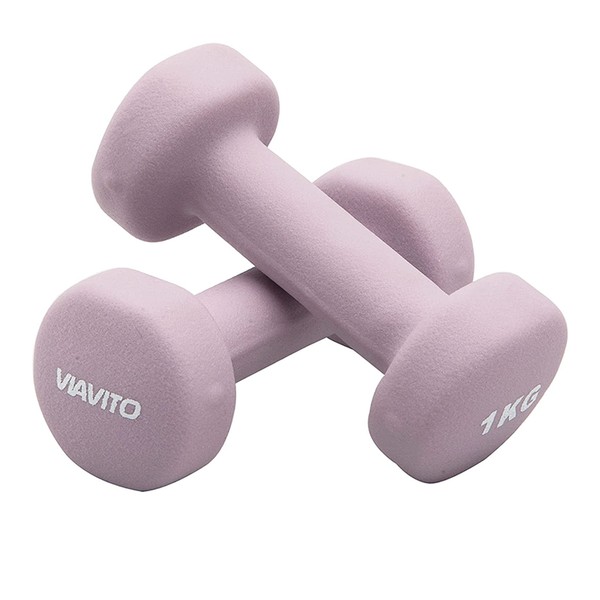


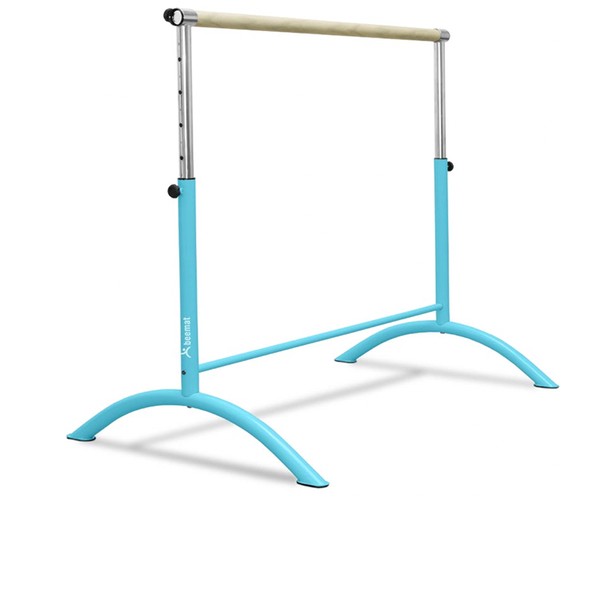
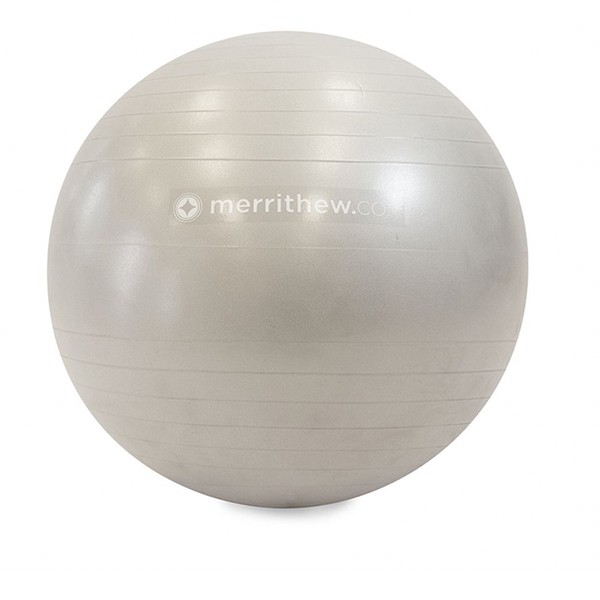
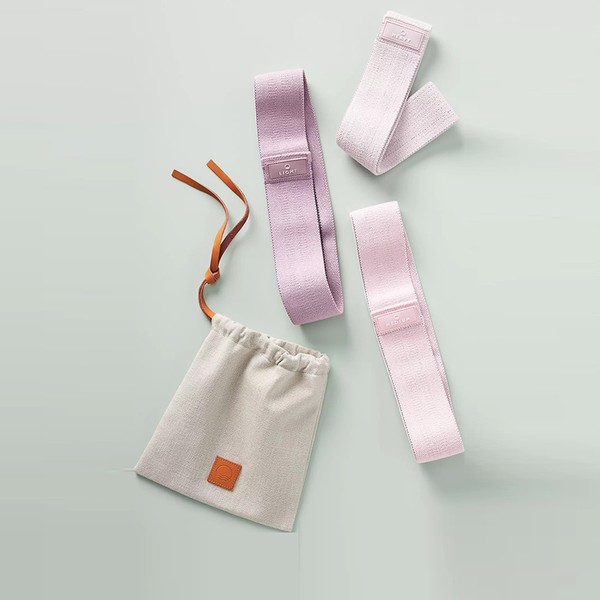
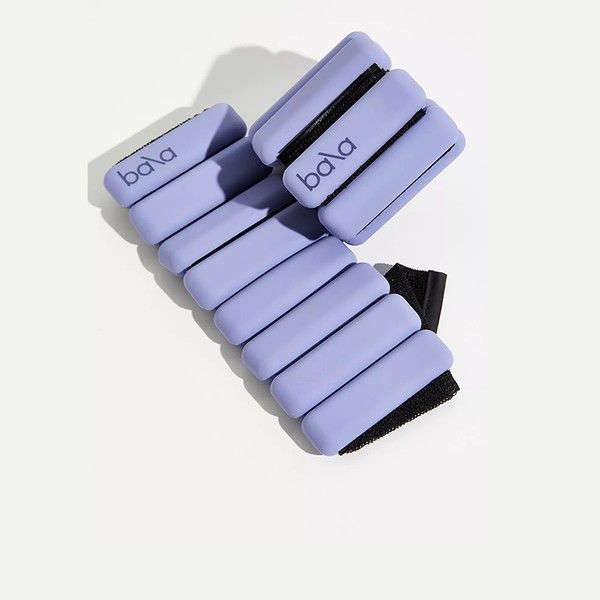
For more information visit PsycleLondon.com, TheClassicalEdit.com and Define.London
DISCLAIMER: Features published by SheerLuxe are not intended to treat, diagnose, cure or prevent any disease. Always seek the advice of your GP or another qualified healthcare provider for any questions you have regarding a medical condition, and before undertaking any diet, exercise or other health-related programme.
CREDITS : PEXELS/COTTONBRO
DISCLAIMER: We endeavour to always credit the correct original source of every image we use. If you think a credit may be incorrect, please contact us at info@sheerluxe.com.
